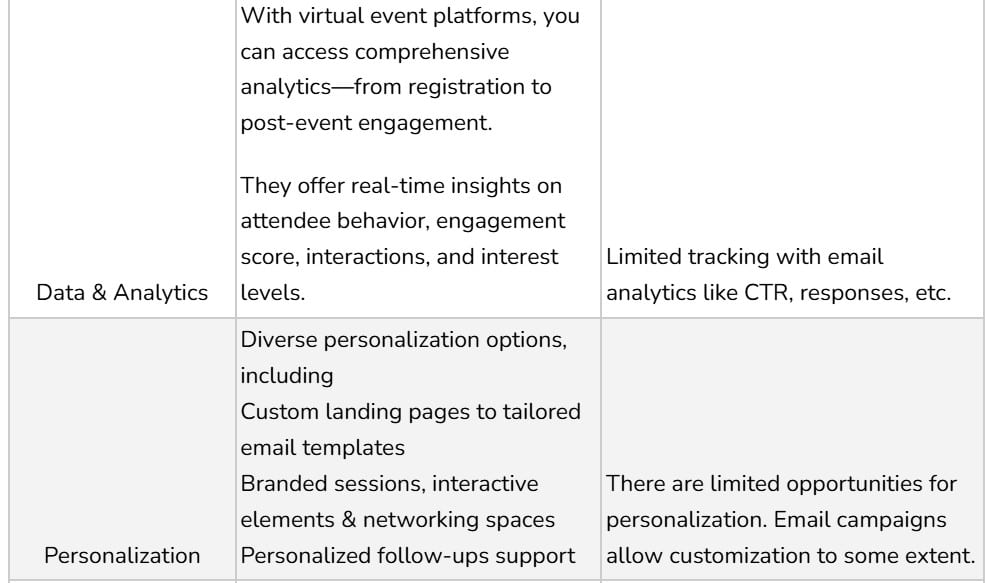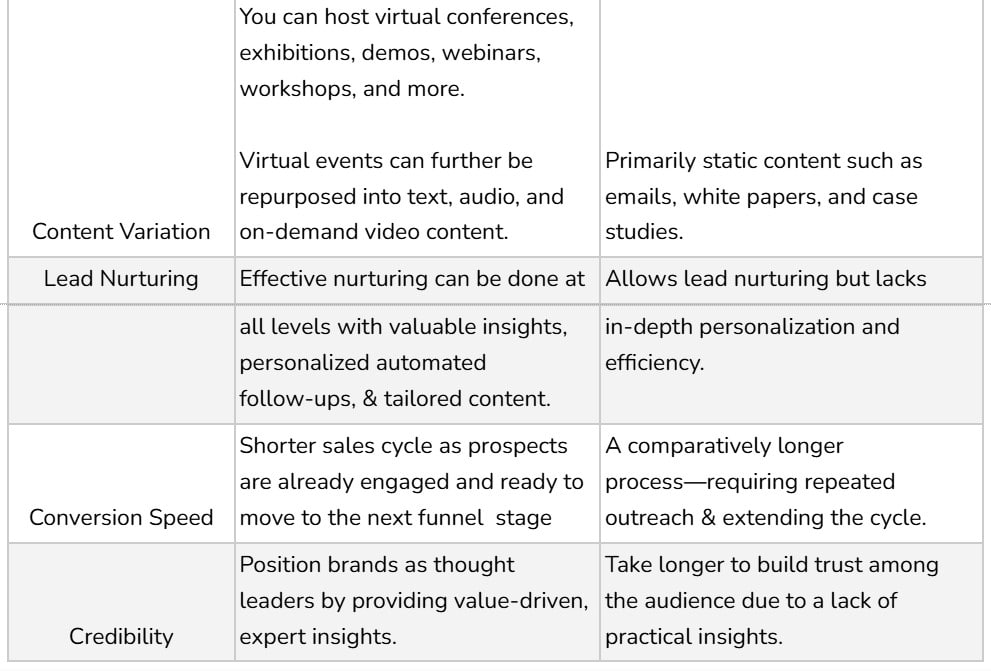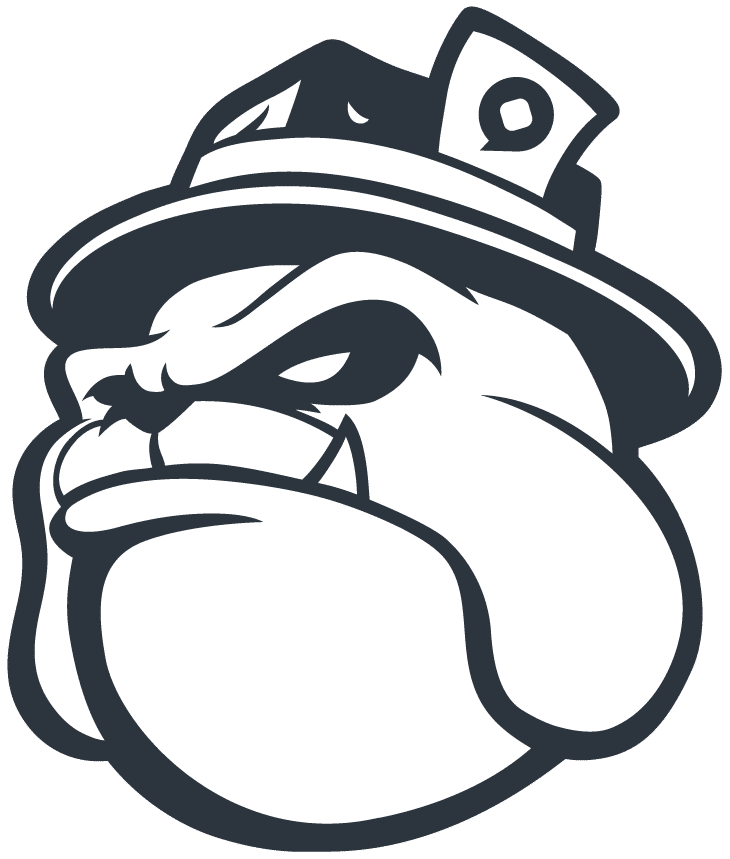In a world that’s rapidly embracing digital-first strategies, virtual events have moved from nice-to-have to must-have for businesses looking to engage, convert, and retain their audience.
In fact, 63% of the virtual event organizers plan to increase their investment in virtual events next year—and for a good reason.
From lead generation to conversion, webinars and virtual events are transforming the way businesses connect with their audiences and customers. They have evolved modern marketing—enhancing traditional methods with real-time engagement & data-driven insights.
This blog discusses how webinars and virtual events supercharge marketing funnels and boost conversions.
Marketing Funnels: Why and Where Webinars & Virtual Events Fit In
A marketing funnel comprises a whole cycle that begins with brand awareness and ends with conversion.
From spreading awareness to nurturing interest to guiding prospects through the decision-making process and driving conversions, marketing plays a vital role at every stage.
Webinars and virtual events have emerged as a powerful medium connecting businesses with global audiences—not just as lead generation tools but also as an efficient mechanism to sustain engagement and improve conversion rates.
Research shows 99% of the companies acknowledge webinars are crucial for their marketing strategy. By offering interactive & value-driven experiences, virtual events help businesses build trust and educate prospects.
Let’s explore how!
Awareness Stage
At the top of the funnel stage, your audience is beginning to recognize their pain points and actively seek solutions that resonate with their needs. The primary goal here is to attract attention, spark interest, and establish credibility through valuable content.
Webinars and virtual events at this stage serve as excellent tools for introducing your brand and spreading awareness among your target audience. You can host:
- Educational webinars covering industry trends, best practices, and problem-solving strategies (without pushing a sales agenda).
- Product launch events showcasing new offerings and demonstrating how they are relevant to audiences.
- Virtual exhibitions & tradeshows, to offer an interactive space for attendees to explore solutions and engage with your brand.
- Virtual conferences and bring together industry experts and leaders to provide valuable insights & have thought-provoking discussions.
Consideration Stage
At this stage, prospects are aware of your brand and actively exploring credible solutions. The goal at this point is to nurture leads by providing valuable content and interactive experiences.
You can leverage these webinars and virtual event ideas to build deeper connections and boost engagement.
- Live product demos showcasing your product in action with real-world applications.
- Online workshops, to offer practical insights to help prospects understand how your solution works.
- Fireside chats with existing customers to facilitate real-time discussions where potential buyers can hear firsthand experiences from clients with similar industries.
Decision-Making & Conversion Stage
Now the prospect is ready to make a purchasing decision but may have last-minute concerns. They need reassurance and proof of value—a final push to take action. Your focus should be on providing personalized assistance and clear incentives.
Tailor their experiences by innovating webinar formats. You can host:
- Exclusive invite-only webinars and personally invite high-intent prospects for in-depth, hands-on product trials.
- Interactive Q&As and AMAs to encourage prospects to ask questions, clear doubts, and gain confidence in your offerings.
7 Ways Webinars & Virtual Events Supercharge Marketing Funnels For Better Conversions

1) Establishes Brand Authority
Webinars serve as an effective medium for showcasing expertise and positioning a brand as a thought leader within the industry. When you, as a business, provide valuable insights, actionable strategies, and relevant content—it helps you gain credibility among your audiences.
91% of the marketers who use webinars found them successful in their strategies. Features like live Q&A sessions and expert panels help reinforce authority and trust, making your brand a go-to source for information.
2) Expands Audience Reach
Webinars & virtual events are not restricted by venue capacity and location. They enable you to tap into a global audience and extend their brand presence to different markets.
Moreover, by leveraging formats like on-demand and autonomous webinars, you enable your viewers to engage with the content at their convenience from anywhere. This allows self-paced learning and increases the overall event content lifespan.
3) Enables Personalized Content Strategies
By optimizing AI-driven audience insights collected from webinars, such as engagement levels & scores, poll responses, and attendee behavior—businesses can refine and repurpose their content strategies for different customer segments.
The content personalization can be done at various levels—even pre-event and post-event. With the help of unified virtual event platforms, you can track every data point from the beginning, including registrations, traffic, and more.
Having access to such analytics enables you to make adjustments in your pre-event engagement strategies.
With the ability to repurpose these events into diverse content formats, you can transform recordings into hundreds of short- and long-form content—segmented video narrations as well as only audio and text-based content.
4) Maximizes Lead Generation Opportunities
Webinars attract high-intent prospects who actively seek industry-specific knowledge, making them an effective lead generation tool. With processes like registration and event surveys, you can collect crucial attendee information, which streamlines follow-ups, nurturing, and retargeting efforts.
As webinars and virtual events are highly accessible, they further boost lead generation by connecting you with geographically dispersed audiences, removing any regional constraints. Today, 87% of marketers consider opportunities generated by virtual events as a success factor.
5) Enhances Lead Qualification & Scoring
According to this report, 73% of the marketers and sales leaders believe webinars are the best way to generate quality leads.
Virtual event analytics help segment attendees into high- and low-intent prospects based on their engagement & behavioral patterns—like poll votes, chat messages, emoji reactions, and time spent. This feature enables marketers to divide prospects and develop a more targeted approach for high-intent prospects to maximize impact.
6) Accelerates Lead Nurturing Through the Funnel
A well-structured webinar strategy ensures consistent engagement with your prospects across the marketing funnel. Webinars serve as high-value touchpoints that nurture leads from initial awareness to final conversion by delivering educational and interactive content. According to this report, the conversion rate of webinars on average is 35-55%.
From the TOFU to the BOFU stage, virtual events can accelerate lead nurturing through:
- Personalized follow-ups and content recommendations based on audience insights to increase click-through rates and drive engagement.
- On-demand content and event replays allow global audiences to engage at their own pace.
- Strategic CTAs guiding prospects toward customer success stories or product trials to move them further down the funnel.
- Exclusive speaker invitations for high-intent prospects help position them as industry thought leaders and foster deeper connection with your brand.
7) Increases Sales Efficiency
Unlike passive marketing strategies, webinars allow real-time interaction, increasing buyer confidence. Product demos, use case presentations, and real-life customer success stories help attendees make informed purchasing decisions.
This LinkedIn study says 20-40% of webinar attendees turn into qualified leads, making webinars the most effective conversion tools.
Comparison Chart: Virtual Events vs. Traditional Lead Generation



Best Practices to Accelerate Conversions at Each Marketing Funnel Stage
Top of the Funnel
- Prioritize educational value over sales pitches: Ensure your event delivers tangible value to your audience—whether or not they convert. The content should be strategically presented to deliver immediate value. This approach will help you position your brand as a credible advisor and source for information.
- Optimize for maximum reach: You can offer free registrations and partner with relevant and established influencers or public figures to expand your audience’s reach.
Additionally, don’t forget to repurpose your event content into multiformat content pieces—on-demand webinars, blog posts, snippets, webcasts, podcasts, and more. Not only does it help in increasing the lifespan of content, but it also enables you to connect with an audience from diverse backgrounds and preferences.
For example: There are people who couldn’t attend your event but they are interested in your content. Here, on-demand webinars and blog posts are extremely useful, offering those sections of the audience the convenience to go through the content anytime.
- Address pain points: Conduct an in-depth analysis to understand your audience’s pain points and structure the event content to address those challenges. Present objective information that helps your attendees understand their main concern and helps them evaluate the best solutions.
Middle of the Funnel
- Implement strategic segmentation: Develop industry- and use-case-specific webinars—this will help you streamline the nurturing process while delivering content that resonates most with your prospects. You can also segment people based on their backgrounds and demographics.
For example, organizing panel discussions or webinars dedicated to different stakeholders’ concerns. In these events, you can explore the increasing challenges for consumers in that particular industry and discuss the tentative solutions available. If your company targets a specific demographic—such as athletes or corporate professionals then your event should address their unique concerns and offer relevant solutions.
- Strengthen credibility through social proof: Share publicly available testimonials and case studies of your satisfied customers. Host customer webinars or video podcasts and invite your existing customers to share valuable insights and their experiences with your brand. Highlight your industry awards and recognitions across social media and on your website. This strengthens your credibility in front of your prospects even without being too vocal about it.
- Create opportunities for one-on-one engagement: You can host follow-up events connected to previously hosted ones, encouraging prospects to join the session to gain more relevant information, have brainstorming discussions, and have one-on-one interactions in real-time. To facilitate an effective one-on-one conversation post-event, provide tailored follow-up materials to each one of your high-intent prospects. This customized approach will create the impression that you heard them and were thoughtful enough to share resources that aligned with their interests & requirements.
Bottom of the Funnel
- Ensure high-value experiences: Host invitation-only virtual events for high-intent prospects, provide advanced previews of upcoming features or services, and facilitate direct interactions with existing customers.
- These high-value experiences build anticipation, foster trust, and create a sense of exclusivity. By giving prospects insider access and authentic peer insights, you accelerate decision-making and drive higher conversions.
- Streamline the path to purchase: Ensure the buyer’s journey is straightforward by simplifying navigation, reducing steps, and providing clear support. Ensure a seamless checkout and quick access to key information like step-wise guides.
Additionally, provide customized plans & offerings suited best to their requirements to move them toward conversion faster.
Final Thoughts
Unlike conventional methods, webinars and virtual events go beyond traditional lead generation—they create scalable, interactive experiences that drive higher engagement, trust, and conversions. These formats enhance marketing efforts and support modern PR strategies.
The growing popularity of storytelling and real-time audience interaction has made two-way conversations more important than ever. By integrating virtual events into PR efforts, brands can increase visibility & foster authentic connection with global audiences.
FAQs
How can small businesses benefit by leveraging virtual events?
Virtual events help small businesses expand reach, generate high-quality leads, and boost brand awareness at minimal cost. They can also use social media or free live streaming platforms to host events and connect with a diverse audience.
What role does social media play in boosting webinar conversions?
Social media platforms like LinkedIn enhance webinar conversions by attracting truly interested attendees. It further helps you engage prospects and provides valuable insights into their interests and pain points, enabling you to tailor nurturing initiatives & drive better conversion rates.



